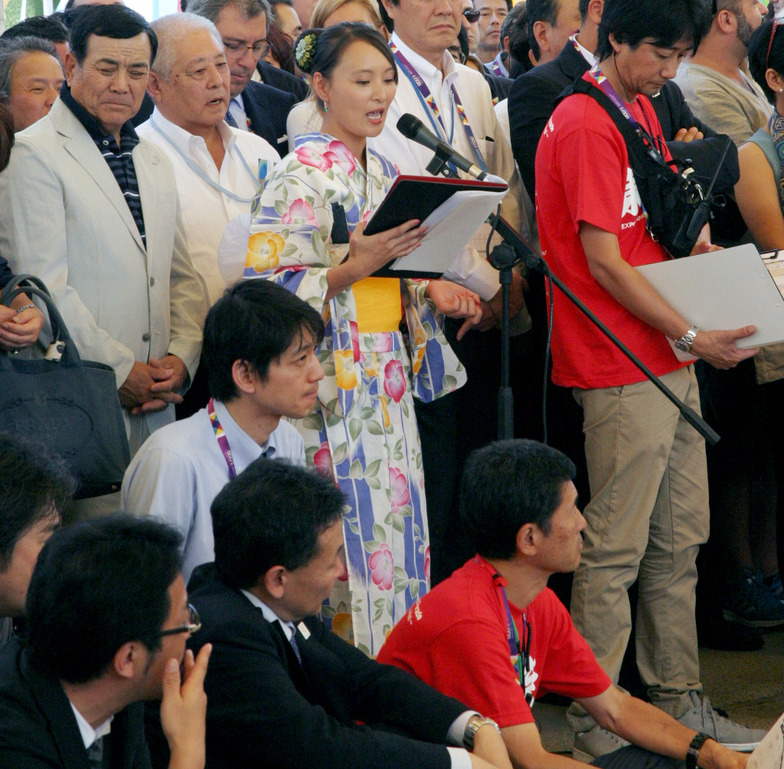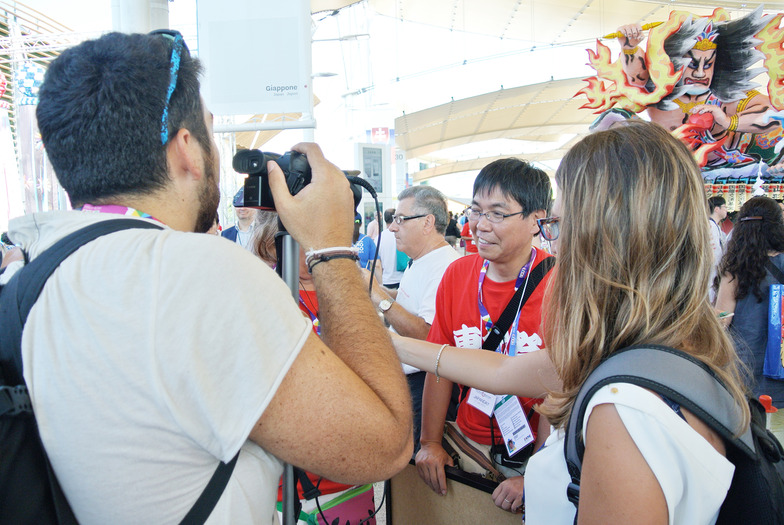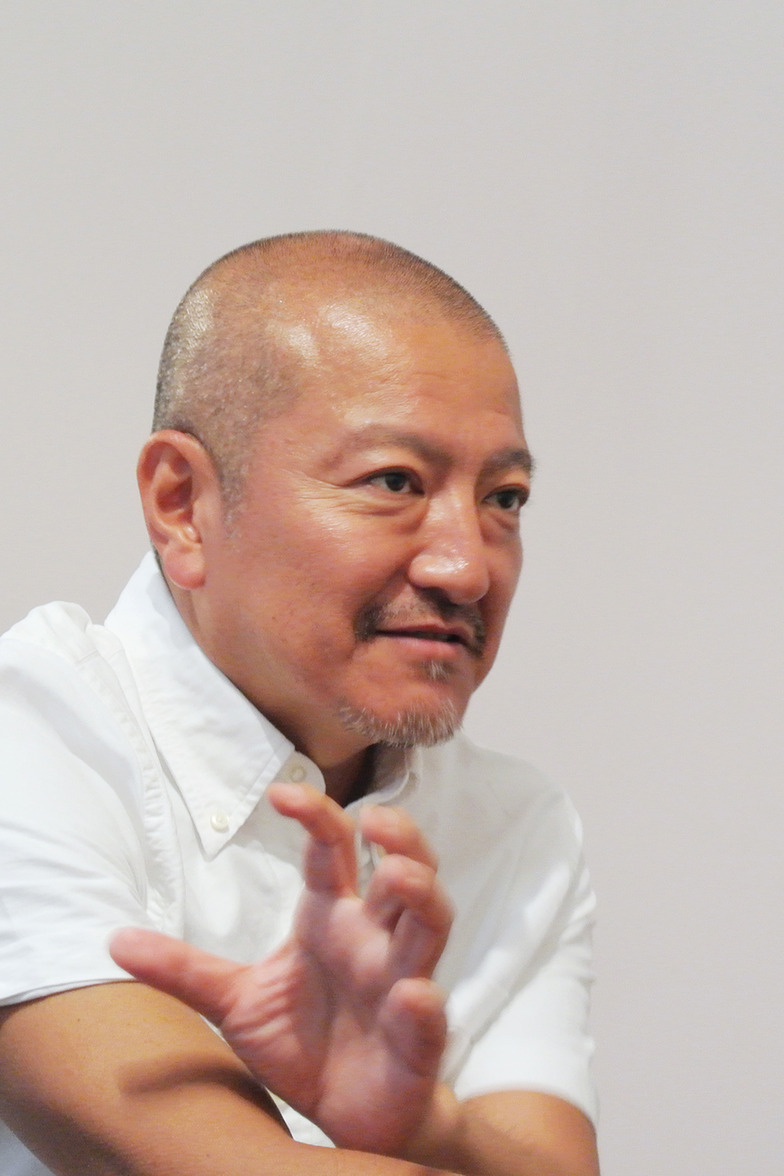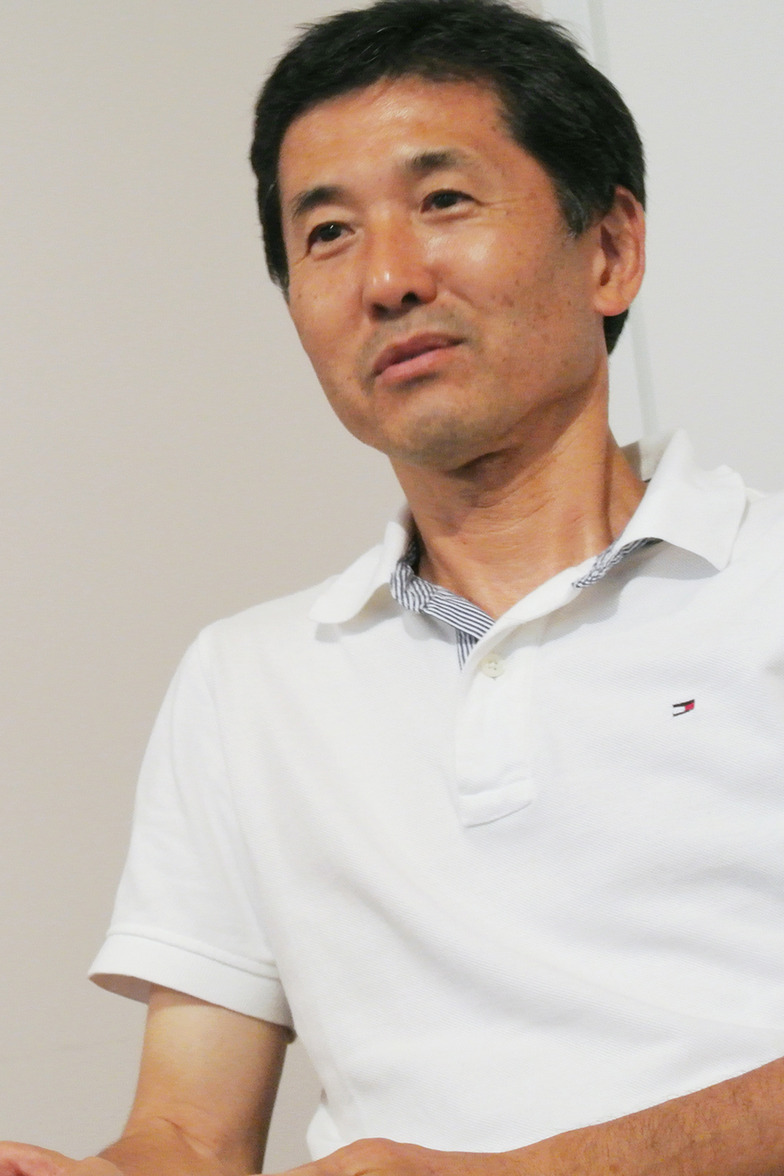At the "Japan Day" event held on July 11th at the Milan Expo, the "Tohoku Recovery Festival Parade" expressed gratitude for global support following the Great East Japan Earthquake. The parade featured ten festivals marching down the main street: Morioka's "Sansa Dance," Sendai's "Tanabata Festival (Suzume Dance)," Yamagata's "Hanagasa Festival," Fukushima's "Waraji Festival," and Aomori's "Nebuta Festival." Doraemon and Hello Kitty also participated, making it a huge success ( details of the parade can be found here ).
After the event, Keiko Sakai of the Ministry of Economy, Trade and Industry, Hiroyuki Koyama of Sendai City, Hideo Noguchi of JA Zenchu, and Dentsu Inc.'s Katsuhito Kimura, who oversaw the project, held a discussion in Milan.
Reporting & Editing: Aki Kanahara, Dentsu Inc. Event & Space Design Bureau
It would have been difficult using the usual government approach
Kimura: Well done on Japan Day! First, could you share your thoughts now that it's over?
Sakaisi: It started with the feeling that it was almost impossible to realize. Seeing all the scenes we brought to this point come together, yesterday's parade was truly moving. We first presented the idea to the Sendai Chamber of Commerce and Industry last September.
Koyama: Even the Tohoku Rokkon Festival itself had trouble finalizing its schedule, so we didn't really start moving forward until December.
Kimura: In the end, I think it became quite central to the Japan Day events, a major flagship event.
Sakurai: Seeing so many smiles—the smiles of the Italian guests and others, and the smiles of us organizers—it was overflowing with a sense of accomplishment. It was truly wonderful.
Koyama: I cried the day before, so I didn't cry on the day itself, but everyone else was crying that day.
Sakaisi: I cried too, right at the end, when I realized we were only about 20 or 30 meters from finishing.
Noguchi: When we returned to the conference room after it ended, the Fukushima Prefecture Agricultural Cooperative officials were teary-eyed, and everyone said, "It was good, it was good," so I felt relieved.

Mr. Noguchi watching the departure ceremony
Koyama: They say Italians like Japan, but this made them like it even more. People even said things like, "This parade only happened because of two eccentric civil servants like Sakai and Koyama" (laughs). At least it wasn't done in the usual bureaucratic way.
It felt like these middle-aged guys with some social standing were charging ahead toward some unattainable dream, their eyes sparkling like young people.
Meeting various people and overcoming challenges
Kimura: What was particularly difficult this time?
Sakurai: First, to hold an authentic festival, we had to bring authentic tools. We started negotiations from obtaining export permits for things like the Nebuta floats built with coniferous wood and Japanese paper, and the giant straw sandals made of straw.
Kimura: You went to Genoa customs in March, right?
Sakurai: That's right. That's where I met Franco, the head of customs. I was truly moved when he not only handled the shipment of the Nebuta floats arriving in Genoa but also reached out to customs offices across Lombardy, including Milan—which was outside his jurisdiction—to request support for clearing festival items like the taiko drums.
Kimura: I bet Mr. Koyama's passion really moved Franco, didn't it?
Koyama: Without meeting him, things might have turned out completely differently.
Sakai: And we were also truly helped by Minerva Italia, who provided warehouse parking space for the Nebuta assembly site.
Koyama: It was the perfect location, right next to the Expo site.
Kimura: Negotiating with the Expo Corporation was tough too. It's standard practice in Japan to identify and resolve all potential issues beforehand, but we often got no immediate response, or something we'd agreed on would be reversed the next time we met.
Sakai: It was tough when we'd adjust our plans based on what the Corporation proposed, only to find that proposal had vanished by the time we got there. We were really panicked when we arrived on the day and discovered the waiting room we thought was reserved wasn't secured.
Kimura: That's when the phrase "work with what we have on site" comes up.
Sakai: I think it really toughened everyone up.
Adding four Fukushima festivals to the six festivals of the "Rokkon Festival"
Kimura: With all the constraints, especially regarding how to guide the guests and ensure safety, we just had to grit our teeth and go for it. But honestly, we were pretty anxious.
Sakaisi: The professionals who make the Rokkon Festival happen in Japan provided the backbone support this time. And with the Akita event at the end of May, we also had to prepare for Japan Day at the Milan Expo on July 11th. I realized sheer determination alone wouldn't cut it.
Noguchi: Since the Roku Kon Matsuri happens every year, I felt I had to trust in everyone's experience for it to succeed. With the JA Group joining us, we had to push ourselves. While others had years of experience, we didn't, so we couldn't hold them back.
Kimura: This time, we were doing ten festivals together. We've done the six festivals of the Rokkon Festival before, so we kind of knew the flow. Everyone understood each other's pace and how things worked. But having the four Fukushima festivals parade together was a first. That part was tough for us, and I think all the participants were nervous too.
Koyama: Through this performance, everyone involved in Team Tohoku—Nippon Express, Dentsu Inc., and from our side, JTB, KNT, and ourselves—has grown tremendously over these past months. Talking with Mr. Noguchi and Mr. Sakai, I truly felt Dentsu Inc.'s underlying strength. It wasn't just know-how or skills, but their overall capability—the strength of their conviction and power.
Sakurai: The parade was held to convey a message at Expo Milano: our gratitude for the support in recovering from the Great East Japan Earthquake, and to show that we are now this strong. It was good that we could present something authentic and something we could be proud of.

Mr. Koyama being interviewed
It was precisely because we conveyed the "authentic" that interest in Japan grew

Mr. Sakai marching with a banner
Kimura: Quite a few people told me that if I was going to do this, I absolutely couldn't do it halfway. Half-hearted efforts are uncool, and they'd embarrass the festival people who participated.
Sakurai: For this parade, I believe our role—collaborating iconic Japanese characters like Hello Kitty and Doraemon with authentic Japanese festivals like the Nebuta Festival and the Kanto Festival to showcase them to the world—was key to capturing global attention.
Koyama: For the Italian volunteers who participated and the people watching along the route, I think seeing that made them motivated to go to the real thing, to go to Japan.
Kimura: People aren't just saying they found the parade fun or interesting; they're using the word "moved." I think that means the spirit of Japan is coming through, or rather, the hearts of the dancers are being conveyed.
Koyama: It's not just about technique. Also, something we hadn't anticipated: the parade performers had no backstage area, so all the festival groups entered the site in full costume. Having so many people in festival attire inside the venue on Japan Day actually created a very lively, immersive appeal.
Sakais: Even before the parade started, we had characters positioned around the Japan Pavilion, and performers in dance costumes wearing Hello Kitty patches walking around the Expo grounds. So, unintentionally, it became a very prominent project that really emphasized Japan, didn't it?
Kimura: Exactly! The people themselves became the advertisement. The fact that so many people lined up waiting before it started proves that. When we said, "It starts at 2:30," everyone waited there, and we got asked by lots of people, "Where exactly are you walking from and to?"
Sakai: People also wore Doraemon and Hello Kitty on their costumes, didn't they?
Kimura: We even got comments from Milan residents saying they felt proud to be Japanese, that they were happy, and that they were glad to be Japanese.
Sakai: With over 450 parade participants total, and over 500 including staff, we also had about 160 local volunteers join us. They were a tremendous help and truly amazing.
Kimura: There's no end to the stories. Ten festivals—where should we do the next one? (laughs)
Sakaisi: I definitely want to try it overseas. "It all worked out in the end" doesn't just mean the final result was okay. It's about each individual step working out, supported by solid on-site execution, leading to a great overall outcome. Looking back now, I strongly feel that's what creating an event is all about. Having gained this experience, I think we'll be able to run things even smoother next time we do it in Italy.
Kimura: It was like walking a tightrope—if even one "all's well that ends well" moment had gone wrong, it probably would have been a disaster. I was so happy we could reflect with everyone while the excitement from the event was still fresh. Let's definitely do it again at the Dubai Expo in five years! (laughs).














